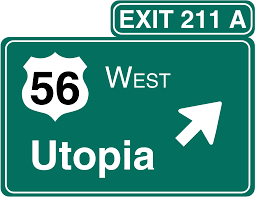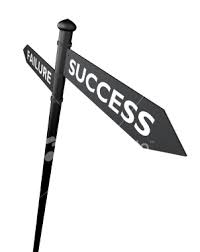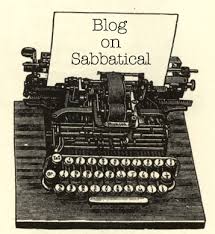
Tuesday, October 27, 2009
National Cultural Policy

Revealing the Arts - Day 2

socialinterior I find this event very focused on the major performing arts and the issues they are having catching up on where everyone else is at #rtarts
artsdigitalera RT @The_Art_Life: New media world collides with old world art politics of entitlement.#RTArts
socialinterior The Australian Opera discovers social networks#rtartscommuter_dirge@aussiecosi has 88 following, 54 followers, and 91 tweets. Hardly a roaring success... #RTArtscommuter_dirge twitalyzer score for @aussiecosi:http://tr.im/Db2n: "0.3 influence" "0.0% generosity" "0.7% clout" (now I'm just being mean) #RTArtsunsungsongs . @commuter_dirge and 66 facebook firends. That's a #fail surely?#RTArtscommuter_dirge @fireinthesouth well, that's you're brand, just as@AussieCosi is a branded account. It's really not a great case study. #RTArtsunsungsongs I am extremely curious about whether those involved in Aussie Cosi see it as a success and how they judge that?#rtartsmattriviera @aussiecosi What did you learn thru social media feedback you couldn't have gotten thru a survey? Best use of social media? #RTArtsmattriviera @aussiecosi Wouldn't a good way for fan community to engage with the work be for them to appropriate it? To re-interpret it? #RTArtsshoes_off @elliottbledsoe @commuter_dirge true, but showcasing a more active community than cosi would have displayed the scalability of SM #rtartscommuter_dirge @bimyou_bimyou I'm not talking monetising twitter in and of itself. but you need to show some proof of it working & a correllation #RTArtsdziga @aussiecosi doesn't seem to have a lot of followers #rtartsrevealingarts Katrina Sedgwick: "Messing", "playing", "getting in there", these are the kind of mind frame to approach digital, not "sell tickets" #RTArts
Monday, October 26, 2009
More refs...that I probably won't use...

Nina Simon - Over the past year, I've noticed a strange trend in the calls I receive about upcoming participatory museum projects: the majority of them are being planned for teen audiences. A large number of the collaborative projects of which I'm aware (in which staff partner with community members to co-develop exhibits or programs) are initiated with teens. Even the most traditional museums often manage educational programs in which teens develop their own exhibits, produce youth-focused museum events, or provide educational experiences for younger visitors. And while I enjoy working with youth and consuming their creations as a museum visitor, I'd like to call into question the idea that they are or should be the primary audience for participatory experiences.
Breakfast on the Bridge

Revealing the Arts

Are you wondering what’s happening to arts and culture in the new digital world? Where will the money come from? How will we manage rights? Where do we fi nd creative partners? What works and what doesn’t? And what are we leaving the next generation? The Australia Council for the Arts and the ABC invite you to be part of a selected group of strategic thinkers, artists, practitioners and directors who will uncover the opportunities for the arts that the digital era presents.Today and tomorrow, the ABC and the Australia Council are hosting 'Revealing the Arts: creative conversations and solutions for the digital era'. The program of discussion appears to be covering the current and future role of digital across areas such as a education and opening up access to arts, while tackling 'issues' such as copyright, rights management and commercial opportunities in the digital era.
there are vital basic assumptions that are rarely questioned: that the culture, the cultural organisations that deliver it, the cultural needs and infrastructure of Australia will remain more or less fixed. Technology is merely about the marketing, the branding, the language, the revenue and the education programs. The idea that the culture itself is changing and evolving is rarely considered. Technology merely changes the hype and the pitch to keep the kids interested.
The ABC has long moved beyond that. The broadcaster has realised that in order to justify its continued existence, it needs to keep questioning and evolving its roles.
Monday, October 19, 2009
Feudal dynamics...infomation management at arts organisations
I've been hunting down performing arts collections online today (don't ask...oh ok, I'll tell you... this relates to another project I am working on regarding mounting an exhibition around one of our 2010 shows. At this stage I'm playing 'kill two birds with one stone', I need a draft exhibition proposal for my last uni assignment, not the new media one, this is another, but I also actually believe in this, shock/horror! and think that 'we' could actually pull this off...) anyhow I digress.
As I did this research today I came across a collection I had never encountered before the Wolanski Foundation. It provided some great links and my research is off and running, but funnily enough, I also stumbled across something related to ideas about information management, a key discussion that has come out of our intranet project meetings. Although it's a bit old, the comments made and the use of the phrase 'feudal dynamics' had me in stitches (you know, the ones that make you actually weep), because basically it rings true....information black hole anyone?
Information Management at [Arts] Organisations
Performing arts organisations, like other types of organisations, are moving through phases in adopting technology. In many, an experimental phase has emphasised business unit interests over the broader needs of organisations.
Feudal dynamics, for example, characterised the adoption of technology at Australia’s cultural flagship, the Sydney Opera House (http://www.sydneyoperahouse.com). At the beginning of the 1990s, after the initial investment in personal computers, lack of coordination, lack of formal controls and inconsistent use of standards led to widespread ambiguity and perpetuated high levels of data redundancy across the organisation. After the purchase of an events management system as the intended hub of a corporate system, subsequent implementation of IT continued to run the gauntlet of competing business unit interests, politics, managerial turnover, and wheel reinvention throughout the 1990s.
At the Australian Film Radio and Television School (http://www.aftrs.edu.au), according to Andrew L Urban, research for the school’s 25th anniversary in 1998 was tortuous because of past information management failures. From 1988-1993, the school maintained the mere semblance of order in recordkeeping and “the reliability and thoroughness of data maintained prior to computerisation was a sad and sorry thing.” Deficiencies in files and data systems were partly overcome by drawing on library resources and the corporate memory of library staff.
The development, at the Australian Broadcasting Corporation (http://abc.net.au), of more than twenty separate systems for managing radio and television programs, sound effects, library and archive materials, film preservation, rights management and other functions is indicative of a feudal past that the ABC is now working to address.
In the mid-1990s, government policies and guidelines emerged to guide better practices in agencies under their control. These encourage holistic approaches for managing data, records, archives, library resources, publications and other information assets to reduce duplicate effort and data redundancy. The NSW Information Management and Technology Blueprint, Information Management Framework and other policies on the website of the NSW Government Chief Information Office (http://www.oit.nsw.gov.au/) are examples. Legislation, the international standard AS ISO 15489, and guidelines, such as the Australian and NSW versions of the Dirks Manual, have reinforced more stringent, auditable requirements for managing records.
The success of these regimes is unclear. Government recordkeeping audits report a degree of compliance, but they also point to failures in capturing records, limited control over electronic records, lack of formal disposal protocols and other deficiencies. The status of IT governance as today’s Hot Topic indicates that messages about best practice are taking time to sink in. If Library and Archive Canada’s Information Management Capacity Check Tool and Methodology were used to measure progress towards maturity, the likelihood is that many organisations will attract low scores on managing information contexts, capabilities and quality.
In performing arts organisations, as in the organisations of other industries, challenges persist in handling information strata, islands of information, and information black holes.
Sunday, October 18, 2009
The Power of Time Off

Every seven years, designer Stefan Sagmeister closes his New York studio for a yearlong sabbatical to rejuvenate and refresh their creative outlook. He explains the often overlooked value of time off and shows the innovative projects inspired by his time in Bali.
Saturday, October 17, 2009
More from the wonderful world of new media + museums
To intranet or intra-not?

Google as an arts organisation

Erik Gensler of Capacity Interactive Inc.Google is governed by the following: openness, sharing, aggregation and capturing customer data. The more customer data you have the more you learn and the more you can improve. So inspired by Jeff Jarvis' book What Would Google Do?, I thought about the following: If Google were a performing arts organization it would...
...aggregate all critical reviews and share them to help people decide if they want to attend a performance
...survey ticket buyers after each performance and send them to a forum where they could comment on performances they've seen
...allow people to vote on future rep
...put all production designs on line for people to examine and comment upon
...have 100% flexible exchange policies
...video and share rehearsals and other behind-the-scenes footage
...promote all other arts organizations
...encourage all management and artistic leadership to blog
Is your organization doing any of these things?
Why not?
Not quite Marcus...

From Fresh + New(er)
What Marcus has done in the DIY Museums episode is look at how ‘memory institutions’ are dealing with the reality that they are no longer the sole arbiters of collective memory; nor are they necessarily well placed to collect the burgeoning diversity of contemporary culture and cultural expression. As one interviewee says “everything now is a niche, just the size of the niche differs” – and this poses enormous problems for those who job it is to collect. Fortunately, the same digital tools of production that are, in part driving this diversity, are also providing the means for others to collect and present – again, another challenge for established institutions.
Augmented Reality and the Powerhouse
Tuesday, October 13, 2009
'Drive-through' museum inspired by origami

A "drive-through" car museum with gravity-defying exhibition spaces inspired by origami is being constructed in China.Visitors to the new Automobile Museum in Nanjing will drive their cars to the top of the building around external ramps, before walking back down through the floors to see the other displays.
The Italian architect behind the pioneering design, which was chosen after an international competition, said that he wanted to replicate the experience of a safari in an urban environment.
Monday, October 12, 2009
Government publications for a Monday...

The Australian Government released the Australia's Digital Economy: Future Directions paper on 14 July 2009 which outlines:
- why the digital economy is important for Australia
- the current state of digital economy engagement in Australia and why current metrics point to a need for strategic action
- the elements of a successful digital economy
- the role for the Government in developing Australia's digital economy, and
- case studies of Australians who have successfully engaged with the digital economy from a diversity of industries including content, e-health, maps, banking, education, smart technology and citizen journalism.

